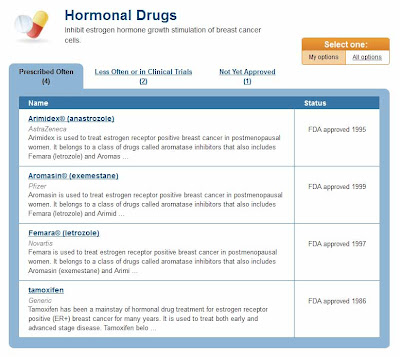
When you're diagnosed with breast cancer, treatment decisions are made quickly. Even if you have great faith in your medical team, you likely want to be involved in these decisions. You want to ask good questions and interact with your medical team at the highest possible level.
The problem is that breast cancer treatment is complex. You know you're not going to have a lot of face-to-face time with your physicians and you want to take full advantage of that time. You want to ask questions that are timely, relevant and insightful.
Question: How can you compile the best possible set of questions relevant to your treatment at each phase of your treatment, from biopsy to surgery to chemotherapy and so on?
Answer: By taking advantage of our "News and Journals" search.
LATESTBreastCancer's News and Journals search is like having your own personal research assistant go through the most recent few years of news and journal articles about a specific aspect of treatment, identify the most important ones, and then organize them in a file folder for you.
To use the News and Journals search, you simply:
1) Select an aspect of treatment ("Procedures" or "Radiation & Chemotherapy"... example).
2) Decided whether you want to search News Articles or Medical Journals (you'll perform each of these searches separately).
3) Select a timeframe. Most likely you'll select "Past 2 years."
When you click Go, our software searches our complete database for the links that you need to see and organizes them in one place (example).
Congratulations! You just saved yourself days or weeks of effort searching for yourself online. More likely, you now have a list of links that you couldn't compile on your own regardless of the amount of time you spent.
Scan the list of links. Print it out if you like. Highlight the ones you want to research further. Not every link will be relevant to you. Your medical profile doesn't tell us everything about you. But it enables us to filter out an enormous amount of information that isn't relevant to your stage of cancer, age, receptor status, etc... The links you get using News and Journals enable you to formulate extremely relevant questions about your treatment based on all of the most current information.
Put simply, breast cancer patients have never had the ability to become so well-informed so easily.

